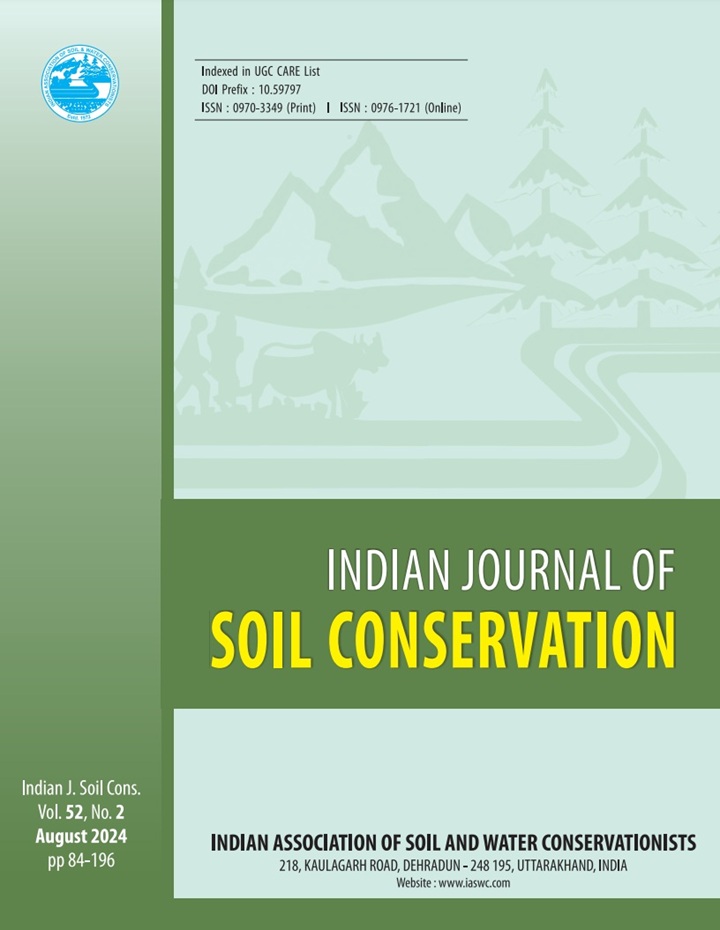Assessing rainfall patterns, erosivity dynamics, and sustainable soil and water management strategies across agro-climatic zones of Chhattisgarh, India
DOI:
https://doi.org/10.59797/ijsc.v52.i2.169Keywords:
Agro-climatic zones, Rainfall erosivity factor, Rainfall trend, Soil erosionAbstract
The study explored the trend of rainfall and rainfall erosivity (R-factor) over 120 years (1901-2020) using monthly precipitation data from 16 stations in Chhattisgarh state, India. Various statistical methods were employed to discern the trend and slope values, including homogeneity tests, non-parametric trend tests, and Sen's slope estimator. The results, at a 5% significance level, underscored a significant increasing trend in rainfall for the Bastar plateau, while the Chhattisgarh plains, Northern hills, and Chhattisgarh state exhibited a declining trend in annual rainfall. However, no specific trend was observed in pre- and post-monsoon seasons. During the winter, the Bastar plateau, Northern Hills, and Chhattisgarh state experienced declining rainfall, whereas the Chhattisgarh plains showed no discernible trend. Notably, the Northern hills exhibited the highest mean annual R-factor (12519.4 MJ mm ha-1 h-1 yr-1), followed by the Chhattisgarh plains (11587.7 MJ mm ha-1 h-1 yr-1) and the Bastar plateau (9633.5 MJ mm ha-1 h-1 yr-1). On the broader scale, the annual R-factor for Chhattisgarh state indicated a declining trend, estimated at a rate of 7.4 MJ mm ha-1 h-1 yr-1. This decline was attributed to a reduction in overall rainfall. However, it is important to note that this decrease in the R-factor does not necessarily signify a decline in soil erosion or soil health deterioration. In order to adapt to changing rainfall patterns, it is important to implement region-specific measures. These measures include dhodhi (well-like structures in natural drains), ponds, gabion structures, loose boulder check dams, gunny bag check dams, vegetative barriers, peripheral stone bunds, and borrow pits. Deep ploughing can also be used to address both increasing and decreasing trends in rainfall effectively. This targeted approach is crucial for sustainable soil erosion management and preserving soil health in the study area.









